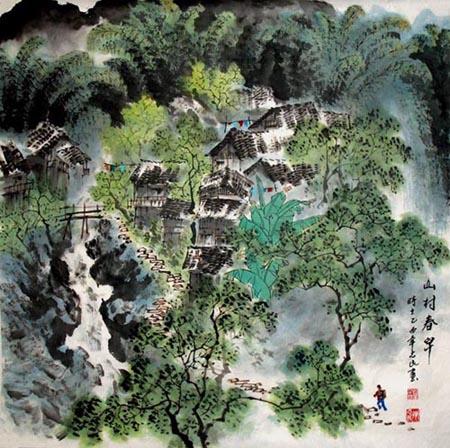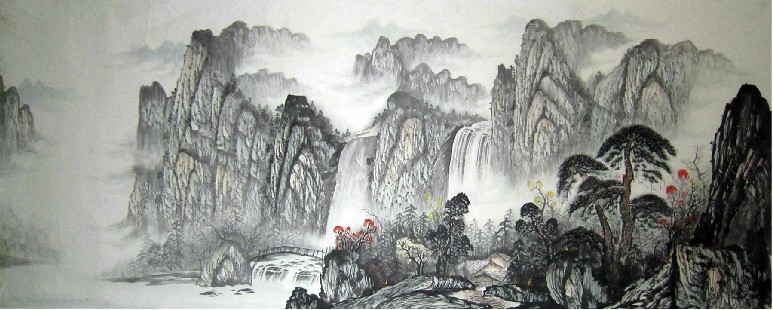Chinese Mountain & Rock Painting
Chinese Mountain & Rock Painting
Rocks show the geology of a scene. If you were to travel on a cruise down the Yangtze River, the shapes of the rocks would be instantly recognizable, as they are the same shapes as many brush strokes. Many of the strokes have names such as "lotus vein," "unraveled hemp," or "brushwood." Do not use too many variants or the scene will not have cohesion. Old painting manuals talk of the rocks being "alive." One way of painting a range of mountains and/or rocks is to think of "host and guest." There should be a dominant peak and one or more supporting elements. This helps to give the painting a pleasing "balance." The scale of the painting will dictate how much detail you use to illustrate the character of the rocks.
show the geology of a scene. If you were to travel on a cruise down the Yangtze River, the shapes of the rocks would be instantly recognizable, as they are the same shapes as many brush strokes. Many of the strokes have names such as "lotus vein," "unraveled hemp," or "brushwood." Do not use too many variants or the scene will not have cohesion. Old painting manuals talk of the rocks being "alive." One way of painting a range of mountains and/or rocks is to think of "host and guest." There should be a dominant peak and one or more supporting elements. This helps to give the painting a pleasing "balance." The scale of the painting will dictate how much detail you use to illustrate the character of the rocks.
A landscape is often painted in three tones or shades of ink. Notice the differences between the examples-practice the strokes and inkwork, starting with the pale gray. Visualize, or to start with, sketch, the "boxes" and paint enough lines to show both the outline of the rock and basic shaping. Do not make the lines continuous, but allow the spirit of the rock to be free. Once the main areas have been painted, add darker ink where it is necessary to describe features in more detail, trying to reinforce the concept of shape, but without going over the previous lines exactly. Ask yourself if you are adding information. If the answer is "no," then stop adding lines.
 Finally, any prominent points or foliage should be added using very dark ink. This helps to give depth to the painting-dark ink should not be used in the distance, but only in the foreground. As the rocks recede into the background, you should decrease the variation in the ink until you are using only pale shape in the distance.
Finally, any prominent points or foliage should be added using very dark ink. This helps to give depth to the painting-dark ink should not be used in the distance, but only in the foreground. As the rocks recede into the background, you should decrease the variation in the ink until you are using only pale shape in the distance.



